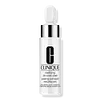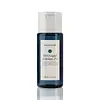What's inside
What's inside
 Key Ingredients
Key Ingredients

 Benefits
Benefits

 Concerns
Concerns

 Ingredients Side-by-side
Ingredients Side-by-side

Water
Skin ConditioningAlcohol Denat.
AntimicrobialGlycolic Acid
BufferingLactic Acid
BufferingSalicylic Acid
MaskingSodium Hydroxide
BufferingButylene Glycol
HumectantHamamelis Virginiana Extract
AntiseborrhoeicPadina Pavonica Thallus Extract
Skin ConditioningLactobionic Acid
BufferingYeast Extract
Skin ConditioningAcetyl Glucosamine
Skin ConditioningTartaric Acid
BufferingPyruvic Acid
MaskingGlycerin
HumectantCitric Acid
BufferingCaprylyl Glycol
EmollientDisodium EDTA
Benzalkonium Chloride
AntimicrobialPhenoxyethanol
PreservativeWater, Alcohol Denat., Glycolic Acid, Lactic Acid, Salicylic Acid, Sodium Hydroxide, Butylene Glycol, Hamamelis Virginiana Extract, Padina Pavonica Thallus Extract, Lactobionic Acid, Yeast Extract, Acetyl Glucosamine, Tartaric Acid, Pyruvic Acid, Glycerin, Citric Acid, Caprylyl Glycol, Disodium EDTA, Benzalkonium Chloride, Phenoxyethanol
Water
Skin ConditioningButylene Glycol
HumectantPropanediol
SolventSalicylic Acid
MaskingSodium Polyacrylate
AbsorbentCitric Acid
BufferingGlycerin
HumectantDiglycerin
HumectantCitrus Glauca Fruit Extract
HumectantMicrocitrus Australasica Fruit Extract
Microcitrus Australis Fruit Extract
Skin ConditioningHydroxyacetophenone
AntioxidantCarrageenan
Phenoxyethanol
PreservativeSodium Phytate
Caprylyl Glycol
EmollientPhenylpropanol
MaskingTocopherol
AntioxidantWater, Butylene Glycol, Propanediol, Salicylic Acid, Sodium Polyacrylate, Citric Acid, Glycerin, Diglycerin, Citrus Glauca Fruit Extract, Microcitrus Australasica Fruit Extract, Microcitrus Australis Fruit Extract, Hydroxyacetophenone, Carrageenan, Phenoxyethanol, Sodium Phytate, Caprylyl Glycol, Phenylpropanol, Tocopherol
 Reviews
Reviews

Ingredients Explained
These ingredients are found in both products.
Ingredients higher up in an ingredient list are typically present in a larger amount.
Butylene Glycol (or BG) is used within cosmetic products for a few different reasons:
Overall, Butylene Glycol is a safe and well-rounded ingredient that works well with other ingredients.
Though this ingredient works well with most skin types, some people with sensitive skin may experience a reaction such as allergic rashes, closed comedones, or itchiness.
Learn more about Butylene GlycolCaprylyl Glycol is a humectant and emollient, meaning it attracts and preserves moisture.
It is a common ingredient in many products, especially those designed to hydrate skin. The primary benefits are retaining moisture, skin softening, and promoting a healthy skin barrier.
Though Caprylyl Glycol is an alcohol derived from fatty acids, it is not the kind that can dry out skin.
This ingredient is also used as a preservative to extend the life of products. It has slight antimicrobial properties.
Learn more about Caprylyl GlycolCitric Acid is an alpha hydroxy acid (AHA) naturally found in citrus fruits like oranges, lemons, and limes.
Like other AHAs, citric acid can exfoliate skin by breaking down the bonds that hold dead skin cells together. This helps reveal smoother and brighter skin underneath.
However, this exfoliating effect only happens at high concentrations (20%) which can be hard to find in cosmetic products.
Due to this, citric acid is usually included in small amounts as a pH adjuster. This helps keep products slightly more acidic and compatible with skin's natural pH.
In skincare formulas, citric acid can:
While it can provide some skin benefits, research shows lactic acid and glycolic acid are generally more effective and less irritating exfoliants.
Most citric acid used in skincare today is made by fermenting sugars (usually from molasses). This synthetic version is identical to the natural citrus form but easier to stabilize and use in formulations.
Read more about some other popular AHA's here:
Learn more about Citric AcidGlycerin is already naturally found in your skin. It helps moisturize and protect your skin.
A study from 2016 found glycerin to be more effective as a humectant than AHAs and hyaluronic acid.
As a humectant, it helps the skin stay hydrated by pulling moisture to your skin. The low molecular weight of glycerin allows it to pull moisture into the deeper layers of your skin.
Hydrated skin improves your skin barrier; Your skin barrier helps protect against irritants and bacteria.
Glycerin has also been found to have antimicrobial and antiviral properties. Due to these properties, glycerin is often used in wound and burn treatments.
In cosmetics, glycerin is usually derived from plants such as soybean or palm. However, it can also be sourced from animals, such as tallow or animal fat.
This ingredient is organic, colorless, odorless, and non-toxic.
Glycerin is the name for this ingredient in American English. British English uses Glycerol/Glycerine.
Learn more about GlycerinPhenoxyethanol is a preservative that has germicide, antimicrobial, and aromatic properties. Studies show that phenoxyethanol can prevent microbial growth. By itself, it has a scent that is similar to that of a rose.
It's often used in formulations along with Caprylyl Glycol to preserve the shelf life of products.
Salicylic Acid (also known as beta hydroxy acid or BHA) is a well-known ingredient for treating skin that struggles with acne and clogged pores. It exfoliates both the skin's surface and deep within the pores to help clear out buildup, control oil, and reduce inflammation.
Unlike AHAs (alpha hydroxy acids), salicylic acid is oil-soluble. This allows it to penetrate into pores which makes it especially effective for treating blackheads and preventing future breakouts.
Salicylic acid is also known for its soothing properties. It has a similar structure to aspirin and can calm inflamed or irritated skin, making it a good option for acne-prone skin that is also sensitive.
Concentrations of 0.5-2% are recognized by the U.S. FDA as an over-the-counter topical acne product.
It can cause irritation and/or dryness if one's skin already has a compromised moisture barrier, so it's best to focus on repairing that before introducing this ingredient into your routine.
While salicylic acid does not increase sun sensitivity, it’s still important to wear sunscreen daily to protect your skin.
If you are looking for the ingredient called BHA or Butylated Hydroxyanisole, click here.
Learn more about Salicylic AcidWater. It's the most common cosmetic ingredient of all. You'll usually see it at the top of ingredient lists, meaning that it makes up the largest part of the product.
So why is it so popular? Water most often acts as a solvent - this means that it helps dissolve other ingredients into the formulation.
You'll also recognize water as that liquid we all need to stay alive. If you see this, drink a glass of water. Stay hydrated!
Learn more about Water